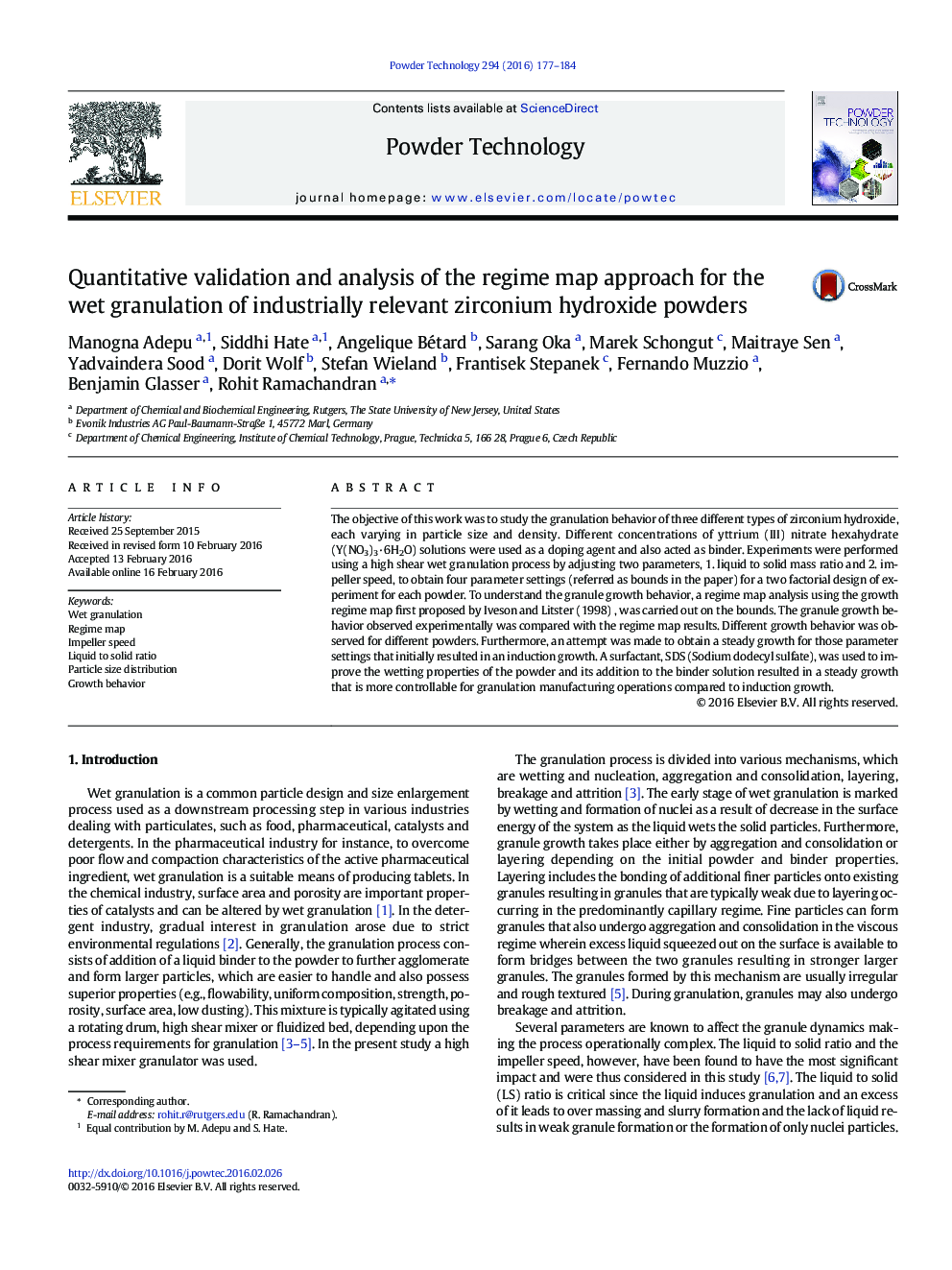| Article ID | Journal | Published Year | Pages | File Type |
|---|---|---|---|---|
| 235058 | Powder Technology | 2016 | 8 Pages |
•We experimentally demonstrate the sensitivity of operational parameters on granulation.•We use a regime map approach to understand and predict dynamics.•We demonstrate the use of a surfactant to improve granulation.
The objective of this work was to study the granulation behavior of three different types of zirconium hydroxide, each varying in particle size and density. Different concentrations of yttrium (III) nitrate hexahydrate (Y(NO3)3·6H2O) solutions were used as a doping agent and also acted as binder. Experiments were performed using a high shear wet granulation process by adjusting two parameters, 1. liquid to solid mass ratio and 2. impeller speed, to obtain four parameter settings (referred as bounds in the paper) for a two factorial design of experiment for each powder. To understand the granule growth behavior, a regime map analysis using the growth regime map first proposed by Iveson and Litster (1998) , was carried out on the bounds. The granule growth behavior observed experimentally was compared with the regime map results. Different growth behavior was observed for different powders. Furthermore, an attempt was made to obtain a steady growth for those parameter settings that initially resulted in an induction growth. A surfactant, SDS (Sodium dodecyl sulfate), was used to improve the wetting properties of the powder and its addition to the binder solution resulted in a steady growth that is more controllable for granulation manufacturing operations compared to induction growth.
Graphical abstractFigure optionsDownload full-size imageDownload as PowerPoint slide
